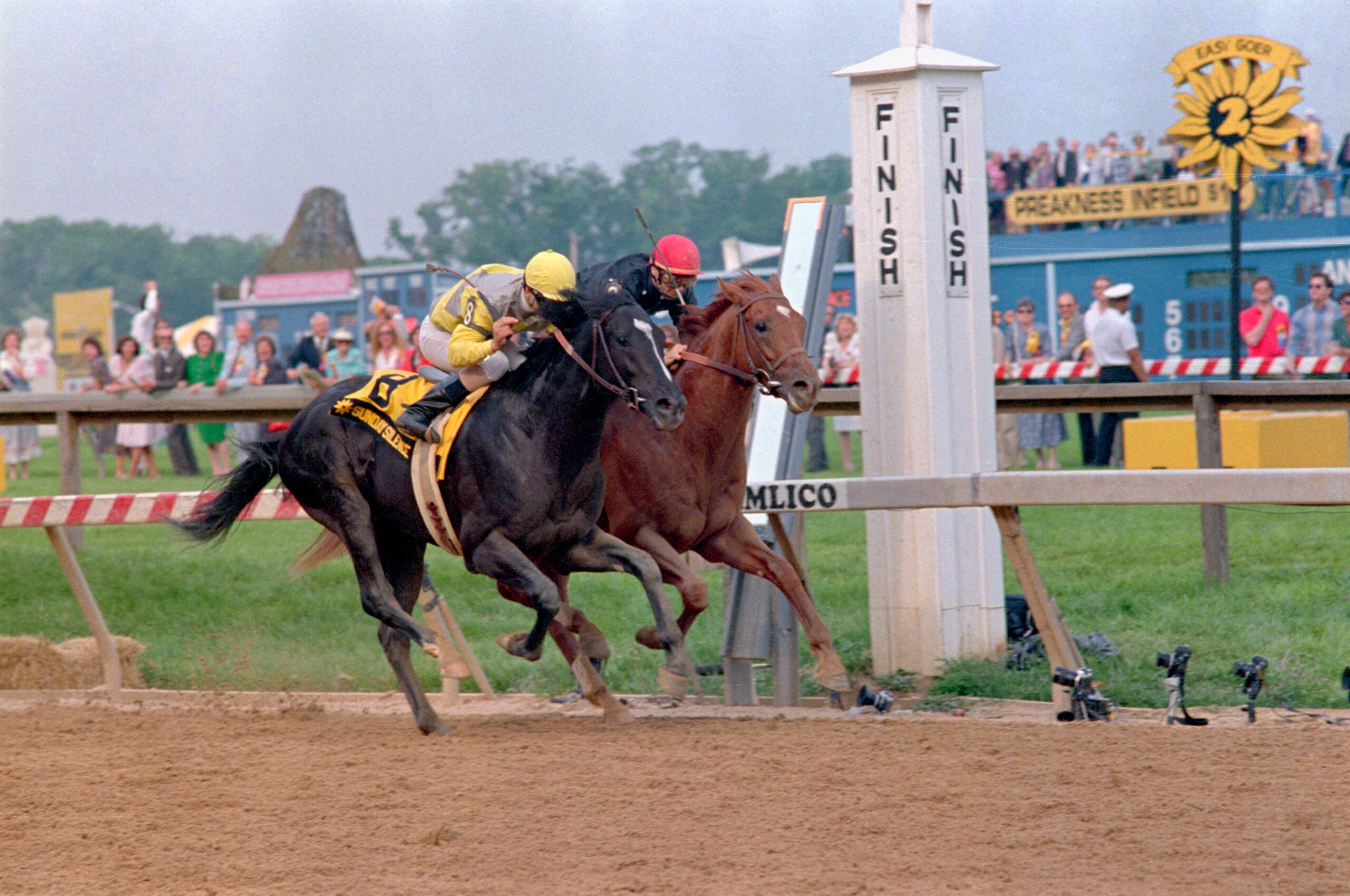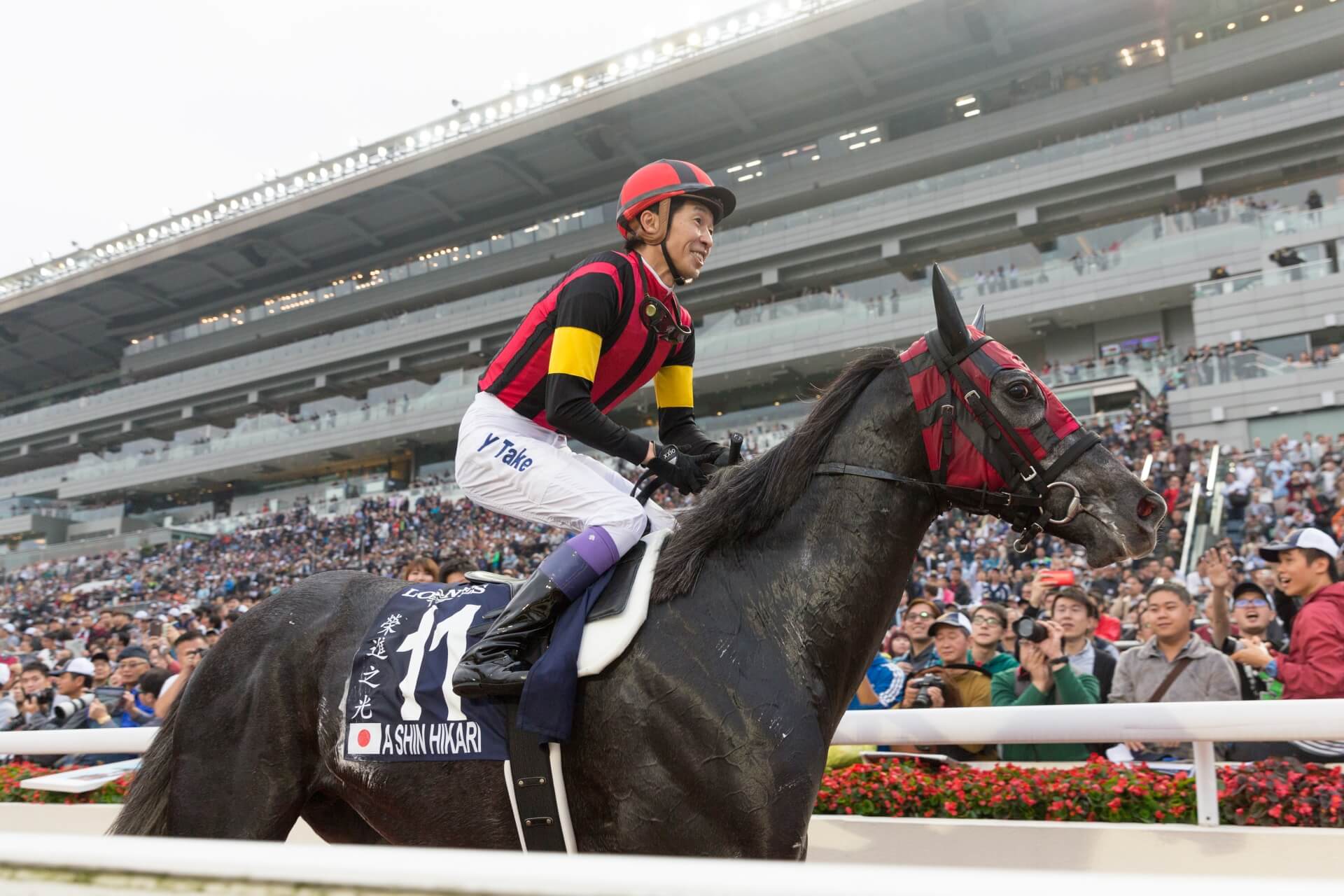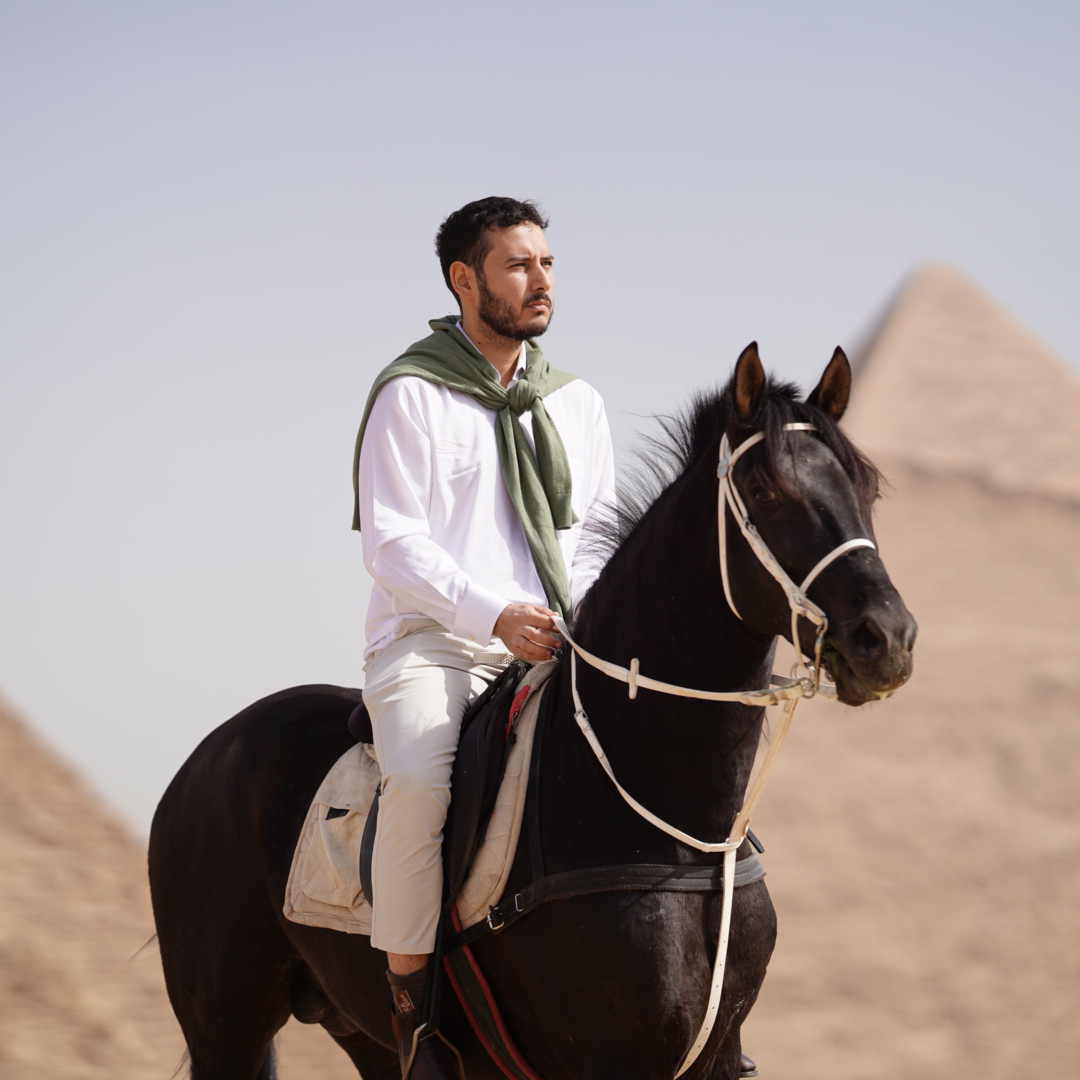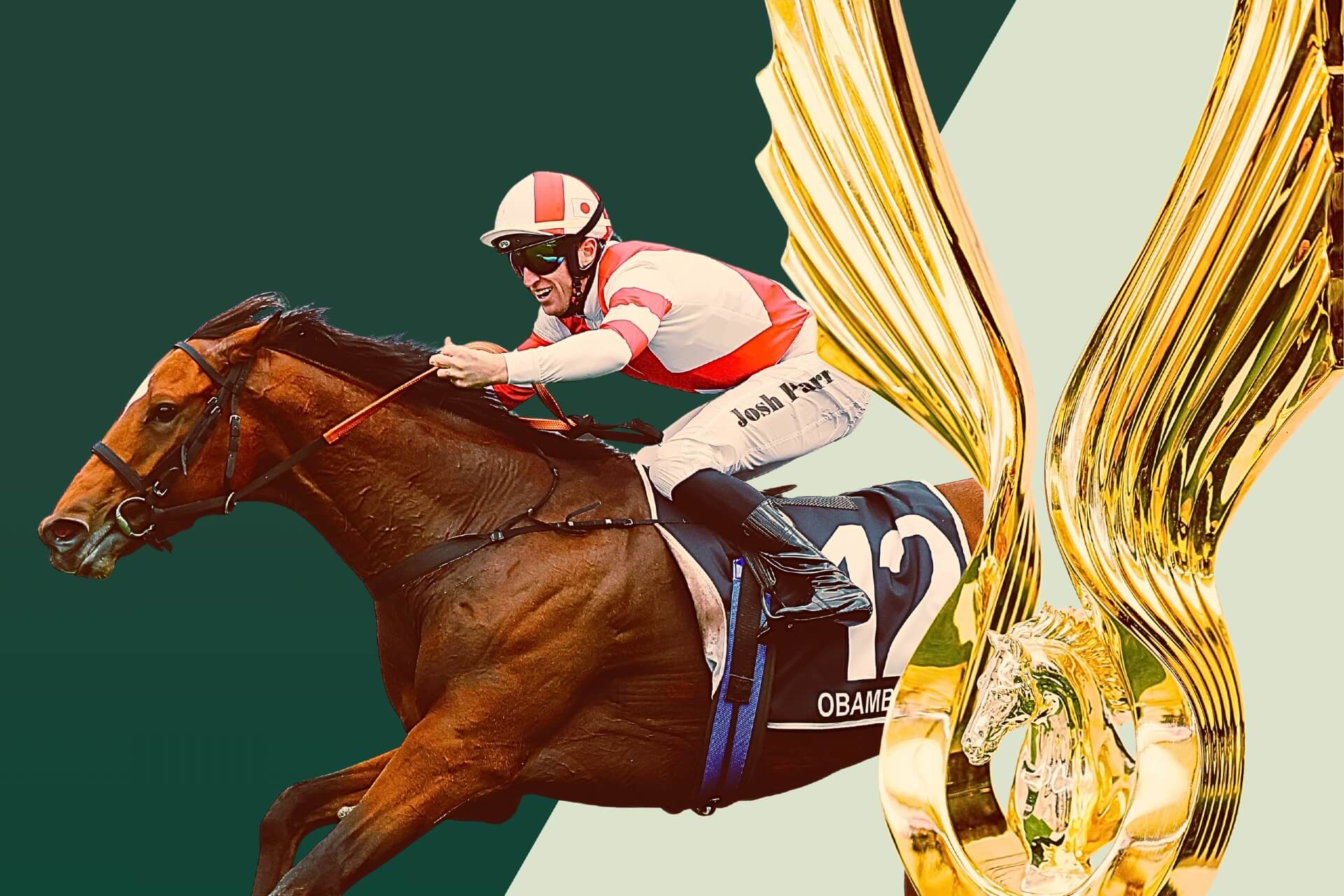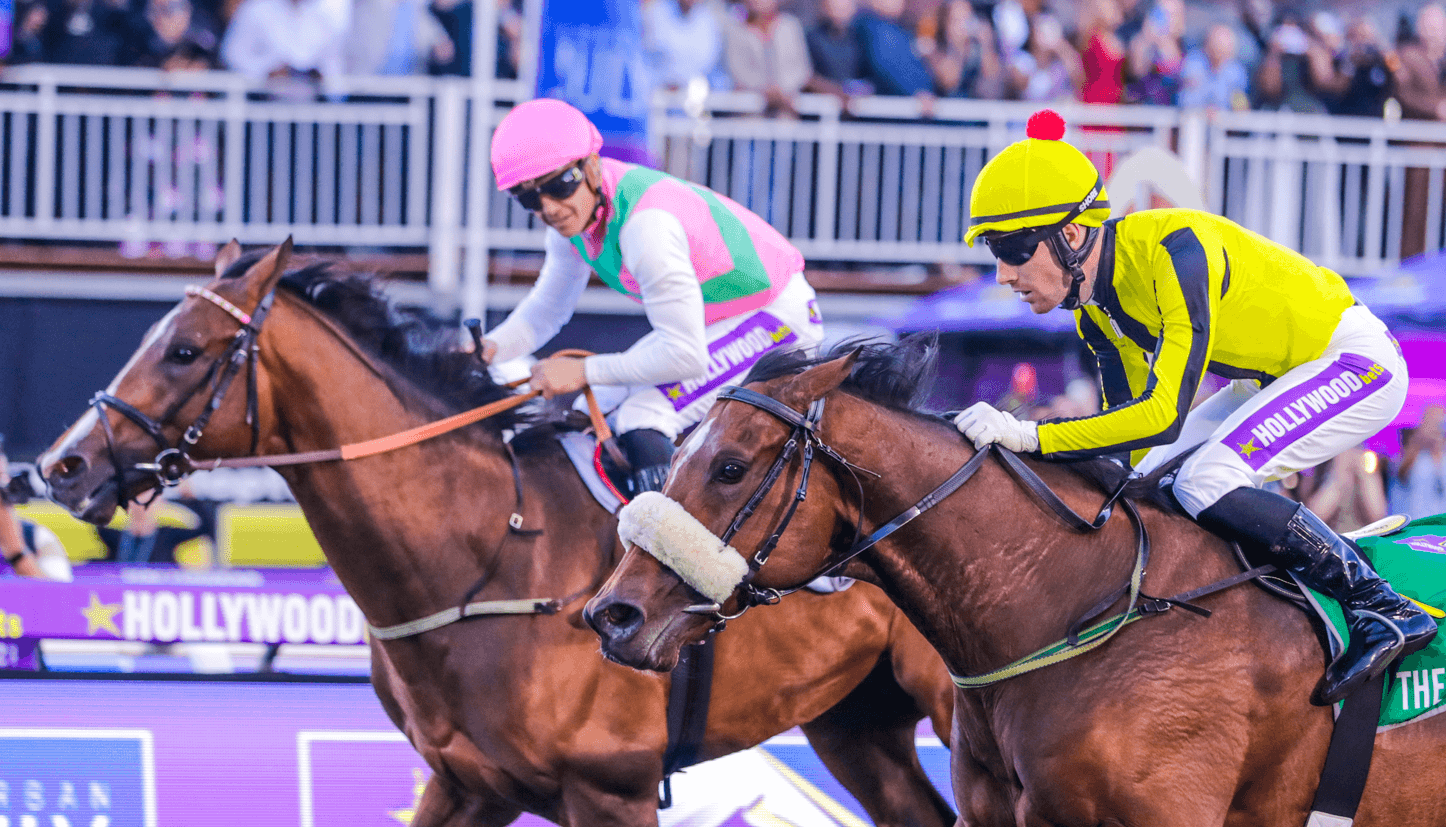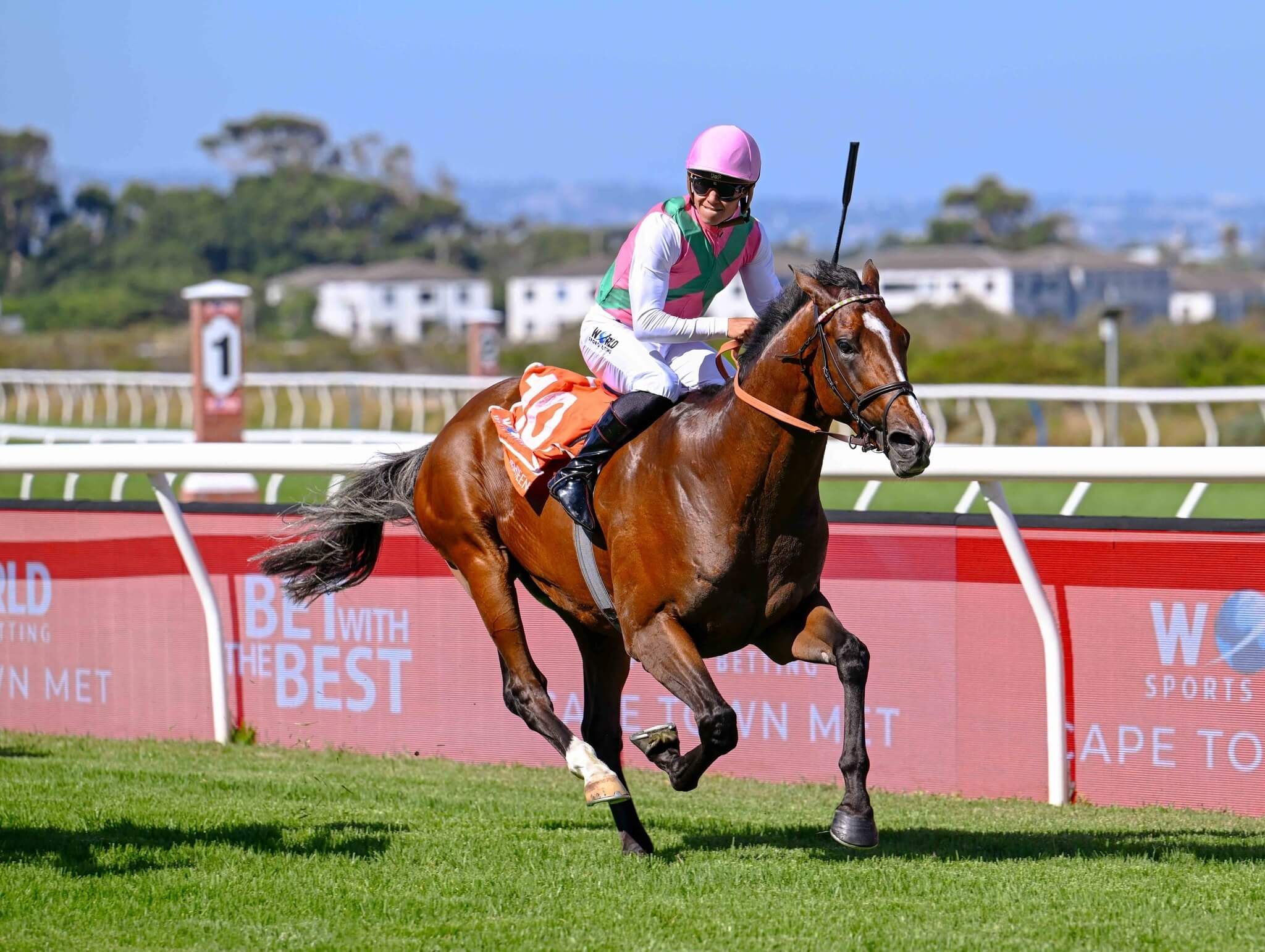WHERE DOES Forever Young and Romantic Warrior’s “Rumble in Riyadh” rank in the history of racing’s two-horse wars?
Firstly, what are our criteria for the rankings?
We are only looking at battles between two horses, not three or four. The individual profiles of each of the protagonists and the significance of the race is taken into account, as is the pre-race build-up for each battle.
But most of all, we’ve ranked the head-to-head match-ups by the intensity of the back and forth tussle between two horses that will not give in.
There have been many in the modern racing era, but here are our best …
5. 2003 Tancred Stakes – Freemason v Northerly
The only one of the five that wasn’t hyped as a two-horse contest pre-race, but it certainly turned into a race for the ages.
Northerly was Australia’s leading horse entering the Sydney autumn in 2003. Already that season, he had won his second Cox Plate and his second Underwood Stakes as well as the Caulfield Cup and the Australian Cup.
However, he suffered two surprise defeats at his first two clockwise runs in Sydney in the two weeks before the Tancred – a nose defeat behind Republic Lass in the G1 Ranvet Stakes (2000m) and a sixth under a massive weight in the G3 Manion Cup (2400m) when regular rider Patrick Payne rode him more conservatively than usual and he ended up without clear room for most of the straight.
Sent off as the $1.45 favourite for the Tancred Stakes, Australia’s only Group 1 weight-for-age race at 2400m, Payne took luck out of the equation by sitting outside of early leader St Reims. However, Darren Beadman – trapped wide on hardy stayer Freemason – whipped around the field to take up the lead, forcing Payne on Northerly to move up on his outside.
Payne might have thought that they would move along at a sedate tempo, but Beadman – a supreme judge of pace and a horseman of the highest calibre – instead ensured a strong but steady speed.
Extraordinarily, from the 1700m they were never separated by more than a length; from the 1000m, the margin was no more than a head either way. It was the epitome of a two-horse war.
Legendary race caller Ian Craig summed the race up beautifully as the mid-race battle developed in earnest, declaring that the two rivals were “hammer-and-tong” past the 500m.
Northerly may have been known as the “Fighting Tiger” but the tiger was eclipsed as Freemason outgunned him down the stretch.
4. 1996 Hanshin Daishoten – Narita Brian v Mayano Top Gun
Often, the G2 Hanshin Daishoten (3000m) is merely a lead-up to the G1 Tenno Sho Spring (3200m). In 1996, though, it represented a tantalising battle between the last two Japanese Horses of the Year.
Narita Brian had won the Japanese Triple Crown and the Arima Kinen in 1994, a campaign that saw him named 1994 Horse of the Year. He returned at four to win the Hanshin Daishoten but was unplaced in three other runs.
In his absence, Mayano Top Gun emerged as the next leading stayer. He followed Narita Brian in winning the Kikuka Sho and Arima Kinen double in 1995, with Narita Brian behind him in fourth at Nakayama. He was named Horse of the Year for 1995.
Pre-race, it was all about the two big names. Mayano Top Gun was just sent off as the 2.0 favourite with Narita Brian at 2.1,
Rarely does a race live up to the billing, but on this occasion, it certainly did. Through the first half, Mayano Top Gun and Seiki Tabara settled fifth one-out with Yutaka Take and Narita Brian a length behind. In a slowly run event, though, Tabara allowed Mayano Top Gun to creep closer incrementally before eventually allowing him to stride to the lead at the 800m. Before the 600m, Take took Narita Brian to his outside – and the match race was on.
On the turn, Narita Brian took a narrow lead but Take was busier on him while Tabara remained more steady. As they straightened, though, Tabara progressed to a drive and Mayano Top Gun responded, perhaps even getting a neck ahead passing the 200m. Mayano Top Gun looked likely to cast Narita Brian aside, but in a race of changing fortunes, Narita Brian somehow lifted off the canvas and again challenged his younger rival.
Five strides from the line, Mayano Top Gun was up by a head and seemingly had enough in hand – but the relentless will of Narita Brian and the smooth horsemanship of Take proved enough to get him home by a head at the line.
3. 2025 Saudi Cup – Forever Young v Romantic Warrior
Perhaps not a stride-for-stride duel in the manner seen in some of the other races on this list, but it was a tremendous two-horse battle that will live long in the memory.
It was a tantalising clash on paper: Romantic Warrior, the top money earner of all-time worldwide and arguably the best turf horse around, taking on arguably the world’s leading dirt horse in Forever Young.
With Romantic Warrior drawn low in three and Forever Young widest of all in 14, any battle looked likely to come late in the piece. Ryusei Sakai, though, had other ideas, shooting Forever Young across the face of the field to end up outside the lead and directly in front of Romantic Warrior after only 100m.
Throughout the long run to the first turn, Romantic Warrior stalked Forever Young before, in a much discussed move, James McDonald took the Hong Kong superstar off the rail and built momentum out wide.
Forever Young looked beaten and, if it had been any other horse, the prospect of rallying would have been absurd. But Forever Young is not any other horse.
Tenacious, classy, laden with stamina, he chased down his continental rival in a thrilling finish to the world’s richest race.
2. 1989 Preakness Stakes – Sunday Silence v Easy Goer
The year-long stoush between Sunday Silence and Easy Goer remains one of racing’s greatest ever rivalries. While the Breeders’ Cup Classic is often referred to as the “race of the century” by American fans, it is the Preakness Stakes which is the better battle between the pair.
It was a classic stoush between east and west. They had first met in the Kentucky Derby, where Easy Goer had been odds-on favourite. He was beaten by 4-1 second favourite Sunday Silence but his dominant two and a half length success was attributed to a muddy Churchill Downs track.
When they met again at Pimlico in the Preakness, the track was fast and Easy Goer was again sent off as favourite at 3/5; Sunday Silence was the 2/1 second-elect.
In the early stages, Pat Valenzuela had Sunday Silence third, one off the fence, while Pat Day aboard Easy Goer trailed immediately behind. That changed approaching the half-mile when Sunday Silence started to inch forward. Day, attempting to take Valenzuela by surprise, allowed Easy Goer to stride forward to challenge early leader Houston and, in doing so, he forced Valenzuela to grab hold of Sunday Silence.
It seemed a tactical stroke of genius from Day but he then gave up that advantage by sitting quietly as Sunday Silence built up momentum to his outside. It meant that, as they were on the apex of the turn, the two rivals simply couldn’t be separated.
What unfolded from there was one of the great stretch battles. Easy Goer got perhaps a head in front with a furlong to go and he was in front in the yards past the post but, where it counted, Sunday Silence had a nose to spare.
Easy Goer would go on to deny Sunday Silence the Triple Crown by winning the Belmont Stakes by eight lengths before their final battle in the Breeders’ Cup Classic again saw Sunday Silence prevail by a narrow margin.
1. 1986 Cox Plate – Bonecrusher v Our Waverley Star
Ask any racing fan in Australia or New Zealand which contest carries the moniker of “race of the century” and the answer, almost unanimously, would be the 1986 Cox Plate.
Bonecrusher was the champion three-year-old of the 1985-86 season on both sides of the Tasman. Waverley Star, who had “Our” added as a prefix when he raced in Australia, had won his way through the grades in New Zealand at a rate of knots.
The stage was set for a thrilling battle, and yet it surpassed all expectations with a war for the ages – elevated by a sensational call from one of Australia’s finest ever announcers, Bill Collins.
Our Waverley Star was trapped wide around the tight Moonee Valley circuit through the first 1000 metres, while Bonecrusher was between horses – not necessarily ideal for a big-striding lump of a horse.
On the turn approaching the 800m, jockey Gary Stewart extricated Bonecrusher from his spot and allowed him to stride around the field quickly. Sensing that move, Lance O’Sullivan aboard Our Waverley Star – who had never been able to get cover – allowed his horse to match strides with Bonecrusher, setting up one of the greatest battles seen on a racetrack.
They raced clear, with Collins asking: “Have they gone too early?”
At first, it seemed Our Waverley Star – despite his tough run – was travelling better of the two. After they had gone head-to-head for 200m, Bonecrusher appeared beaten, conceding a half-length and coming under a windmill whip drive from Stewart.
Under that vigorous urging, though, Bonecrusher responded and put his head in front at the top of the short Valley straight. This time, it was O’Sullivan getting busy with the whip and his horse surged to a half-length lead again mid-stretch.
With the crowd willing both horses on, it looked Our Waverley Star’s race at the 50m mark as he maintained that advantage. But there was also a sense of inevitability that Bonecrusher would find a way to get there.
And so he did. A stride from the line, Bonecrusher hit the front and, in the words of Collins, he “raced into equine immortality”. The eventual margin was a neck – an unfair reflection of an epic duel that remains one of the greatest races ever seen.
Honourable Mentions
1938 Pimlico Special – Seabiscuit v War Admiral
It’s not a two-horse war without the most famous match race of them all, the 1938 Pimlico Special between Seabiscuit and War Admiral that became the most famous sporting event of the radio era. It was even beamed into the White House so that President Roosevelt could follow every step between the two superstars.
1975 King George VI and Queen Elizabeth Stakes – Grundy v Bustino
A gripping battle in Ascot’s showpiece prize, it was on the cusp of breaking into the top five. The Derby-winning three-year-old downed the St Leger-winning four-year-old in a stretch duel for the ages.
2000 Hong Kong Mile – Sunline v Fairy King Prawn
Elevated by David Raphael’s tremendous call, the “mare of the world” was just able to fend off the “horse of Hong Kong” despite the enormous cheers from the Sha Tin crowd for Fairy King Prawn.
2001 Irish Champion Stakes – Fantastic Light v Galileo
For 30 years, international racing has largely been a battle between Godolphin and Coolmore. Fitting then that Godolphin’s globetrotting five-year-old was able to hold out Coolmore’s game-changing three-year-old, overturning a two-length margin from the King George six weeks before. It was Galileo’s first defeat.
2014 Hong Kong Derby – Designs On Rome v Able Friend
This could arguably fall into three-horse war territory as Dibayani entered the fray at times in the straight, but this race was all about the two top four-year-olds who had dominated the Classic Series. It was a spectacular battle that was only enhanced by their respective careers in the years ahead ∎
